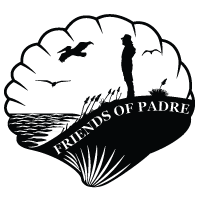Red Tide Status Update 10/23/2015 via TPWD
By Tyler Thorsen
Courtesy of Alex Nunez Red Tide Status Update Reporting Period: October 21 to October 23 @1200 Texas Parks and Wildlife Department is working with other agencies to monitor a red tide event along the southern Texas coast. The bloom was first confirmed on Sunday, September 13, by the University of Texas Marine Science Institute who collected samples around the fish pass jetties on Mustang Island due to strong aerosols. Water samples collected and analyzed for Karenia brevis densities are given the following designations: Background = Less than < 1 cell/ml Very Low = 1 to 10 cells/ml) Low = 10 to 100 cells/ml Moderate = 100 to 1,000 cells/ml High = Greater than 1,000 cells/ml Regional Updates Upper Coast (Sabine Lake, Galveston Bay, East Matagorda Bay, Matagorda Bay): Water Samples Gulf of Mexico Image Flow Cytobot at Texas A&M Galveston continues identifying K.brevis cells at background concentrations near Pelican Island (Galveston). Galveston Bay Area No new updates during this reporting period. East Matagorda/Matagorda Bay area TPWD staff at the Perry R. Bass observed nothing unusual at the research station. Baitfish present appeared to be healthy. Fish kills Gulf of Mexico No new updates during this reporting period East Matagorda/Matagorda Bay On 10/21/15, TDSHS observed dead menhaden near MSC marker 36. Mid Coast (San Antonio Bay, Aransas Bay, Corpus Christi Bay, Upper Laguna Madre) Water samples Gulf of Mexico Over the past 24 hrs., the TAMU Image Flow Cytobot at the UTMSI Pier in Port Aransas has reported K.brevis cell maintaining low to very low concentrations. Water samples collected for K.brevis by PINS ranged between low and very low. Due to unseasonably high tides, staff was only able to get to the 15 mile marker. Sampling sites included the 7.5 miles from the 0 mile marker, 0 mile marker, and North Park Boundary. San Antonio Bay No new updates during this reporting period Aransas Bay Water samples collected for K.brevis by TDSHS in Aransas Bay indicated very low to low concentrations along the south eastern side of the bay from long reef south to Lydia Ann Channel. All other sites indicated background concentrations. Water samples collected for K.brevis by TDSHS in Mesquite Bay indicated low to moderate concentrations. Corpus Christi Bay Streaking continues to be observed along the southern section of Corpus Christi Bay along the Corpus Christi bay front. Discolored water was present along the Nueces Causeway as well Water samples collected for K.brevis by TDSHS in Corpus Christi Bay indicated low to high concentrations. Highest concentrations were observed near the mouth of Oso Bay, in Corpus Christi Marina and in La Quinta Channel west of the turning Basin. Water samples collected for K.brevis by Texas A&M – Corpus Christi, Center for Coastal Studies in Corpus Christi Bay indicated high concentrations along the southern shoreline at Cole and Ropes parks. Upper Laguna Madre Water samples collected for K.brevis by PINS at Bird Island Basin included background concentrations. Fish kills Gulf of Mexico No new updates during this reporting period San Antonio Bay On 10/19/15, TPWD observed distressed menhaden in San Antonio Bay, just north of Mosquito Point between the ICWW and Seadrift. Aransas Bay No new updates during this reporting period Corpus Christi Bay While conducting routine monitoring sampling TPWD staff observed aerosols, predating gulls, and floating fish in the western and southern parts of the bay. Floating fish included menhaden, mullet, a couple large black drum and sheepshead, and a single Spanish mackerel. Stations in the eastern end of the bay were free of dead fish and aerosols. While conducting K.brevis sampling, TDSHS observed dead fish halfway across bay from Shamrock Cove south to Oso Bay. More dead fish all the way from Oso Bay to La Quinta Channel following the shoreline. All species affected. Upper Laguna Madre TPWD staff observed a fish kill along the southwest corner north of the JFK causeway. There was a mix of mullet, red drum, hardheads, and a flounder. The fish had probably been dead for a couple of days with a few more (<10) floating in with the east wind. While conducting routine monitoring sampling TPWD staff observed no discolored water, aerosols, or dead fish in neither Night Hawk nor the adjacent portion of the Laguna Madre. Additionally, no discolored water, aerosols, or dead fish were observed from Bird Island Basin south. Rio Grande Valley (Lower Laguna Madre) Water Samples Gulf of Mexico Water samples collected by the Red Tide Rangers along the beach of South Padre Island indicate low to high concentrations. Lower Laguna Madre Water samples collected for K.brevis by the Red Tide Rangers around the Brazos Santiago Pass area indicate low to moderate concentrations. Water samples collected for K.brevis by the Red Tide Rangers from the Queen Isabella Causeway north to the South Padre Island Convention Center area indicate background to moderate concentrations. Convention Center has increased to >200 cells/mL, the highest seen at this site. Fish Kill Gulf of Mexico No new updates during this reporting period. Lower Laguna Madre While conducting routine monitoring sampling, TPWD staff observed no dead fish nor water discoloration 3 miles north and 5 miles NE of the Arroyo Colorado. However, light aerosols were observed. While conducting routine monitoring sampling, TPWD staff observed no fresh dead fish around the old causeway and Meziquita

0 comments